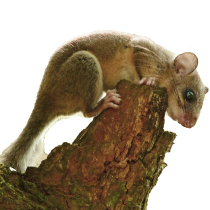Ecosystem Services
The concept of cultural ecosystem has been neglected by the modelling community in comparison to provisioning and regulating ecosystem services. Biodiversity is recognised as a key ecosystem service in all branches of ecosystem service research but of particular importance in relation to the cultural ecosystem services (Dick et al., 2022). The use case will focus on the Cairngorms National Park in Scotland initially as a proof-of-concept study, we aim to consider other areas and different species in future work. The case-study will focus on how a digital twin prioritising user-defined recreation preferences linked to biodiversity occurrence and locations with sparse biodiversity data could be used by the following users:
- Citizens wishing to recreate in nature
- Citizens wishing to contribute scientific data (Citizen scientists)
- Land managers wishing to manage biodiversity and recreationalists in their area
- Policy makers wishing to balance trade-offs in space for development/nature/recreation
- Inter and transdisciplinary researchers seeking to test socio-ecological hypotheses

Ecosystem Services and Digital Twin Models
The Digital Twin will combine multiple data sources from the Cairngorms eLTER site including professional monitoring, acoustic monitoring, camera traps in addition to social science research conducted in the Cairngorms Long term socioecological platform (LTSER) Cairngorms National Park LTSER - United Kingdom | DEIMS.iD: https://deims.org/1b94503d-285c-4028-a3db-bc78e31dea07
This Use Case will incorporate an adaptive sampling approach to improve the biodiversity component DT's representativeness of the real system using approaches pioneered in the DECIDE project (DECIDE | UK Centre for Ecology & Hydrology (ceh.ac.uk)) whereby citizen scientists will be directed to areas where the Digital Twin requires biodiversity data to improve its biodiversity models and citizens recreating in nature have the highest probability of viewing a species.
We aim for documenting the entire provenance chain from the input data, to used processing steps and modelling to the generated output.
Input data used for the modelling will be referenced using persistent identifiers if possible. If input data hasn't been published elsewhere, e.g. coming directly from an eLTER site, it will be documented using the eLTER DAR. All relevant components such as the methods used to collect such data or the methods applied to process it will be publicly documented and linked. The used models will be also documented. The degree of documentation, however, is still to be discussed. This might range from simply citing and reference to the DOI when published in a paper to the actual code used in the use case. If feasible, intermediate data products will be published in the eLTER DAR.
The publication of these components would not only make the data findable and accessible but should also enable external research to comprehend and potentially reconstruct the data processing and modelling steps and verify the generated results.

